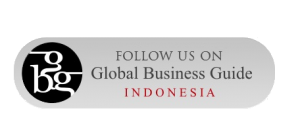Increased awareness about the impact of textile and garment production on the environment has seen greater scrutiny being placed on the textile production process from the selection of fibers down to the dyeing and finishing process. Traditionally, the fabric dyeing process uses large volumes of water and produces significant amounts of wastewater which contain harmful chemicals that if not handled correctly, find their way into rivers and waterways thus harming the natural ecosystem. The concern over the harmful effects of irresponsible fabric dyeing practices has led to a number of forced shutdowns by environmental inspectors across China & in Bandung, Indonesia, forcing textile sourcing agents and buyers to examine the practices in place in their textile production chain. Below are some of key characteristics to look for when selecting a fabric dyeing mill as well as choices that can greatly enhance the environmental sustainability of your textile production footprint.
Wastewater treatment
Wastewater is an inevitable biproduct of the textile production cycle given its requirement for textile processing, dyeing and printing with the dyeing process accounting for 15-20% of the total wastewater flow. The World Bank estimates that 17-20% of industrial water pollution comes from textile dyeing and finishing treatments given to fabrics while the resulting wastewater contains 72 harmful chemicals on average, 30 of which cannot be removed. The past decade has seen marked improvements in how textile and dyeing mills handle their wastewater and the chemical effluents from the dyeing process which can include physical, chemical and biological methods. Some of the options available include adsorption, reverse osmosis, nanotechnology, ultrafiltration, ozonation and crystallisation among various others which use different approaches to removing toxic substances from the water and purifying it, which enables it to be reused. Given the water intensive nature of textile dyeing, production processes that employ technologies to minimize the level of water consumption as well as recycle water should therefore be a priority when selecting a textile manufacturer.
OEKO-TEX® Certified
Always look for an OEKO-TEX® certified textile manufacture or dyeing mill; OEKO-TEX® is a worldwide certification system for environmentally friendly and socially responsible production facilities in the textile and clothing industry. The STANDARD 100 by OEKO-TEX® is a worldwide consistent, independent testing and certification system for raw, semi-finished, and finished textile products at all processing levels, as well as accessory materials used. To obtain OEKO-TEX Standard 100 certification, textiles needs to be free from more than 100 substances known to be harmful to human health. In addition to the certification, check the use of any substances of very high concern (SVHC) listed in REACH, the substances listed in the Restricted Substance List (RSL) of the American Apparel and Footwear Association (AAFA), and the limited or restricted chemicals and the limit values listed in Oeko-Tex Standard 100.
By knowing the composition of the dyestuffs being used by the textile manufacturer or dyeing mill, you can better understand the quality of the chemicals being employed such as the use of pigments as opposed to synthetic dyes and better assess not only their quality, but also their environmental impact.
Digital Printing
Digital printing is the direct printing of colours and patterns onto fabric using design software, large-format printers, and specialty inks made with pigments or dyes. Digital printing is an alternative to standard screen printing, which uses a constrained colour palette and requires separate stencils as well as production steps for each colour that is being used. Digital printing is much faster than screen printing and is becoming increasingly popular for creating textiles and garments with patterns that are required by the high street fast fashion industry as small runs can be completed in a short space of time. Furthermore, digital printing on polyester uses a two-step dye sublimation process that is almost waterless. The pattern is first printed on transfer paper; heat then turns the colour into a cloud of gas, which bonds with the softened polyester.
Fabric Choice
Environmental sustainability in the textile and apparel supply chain has seen a number of innovations in textile composition including fabrics from natural and recycled fibres such as Repreve and Tencel in addition to the increased cultivation of organic cotton which uses less water. Fabric choice also plays a decisive role in the dyeing process as different fabric types take up dye more easily and therefore require fewer washes to achieve colour fastness thus producing less wastewater. Cotton for example only has a dye fixation rate of 75% due to the negative charge of the fabric surface meaning that is requires several water baths including at least one at a high temperature to achieve colour fixation. Producing 1kg of dyed cotton uses 200 litres of water. This contrasts with polyester which has a 99% dye fixation rate, wool with 85% and viscose with a rate of 85-90% therefore requiring lower temperatures and water volumes to achieve the desired result. Fabric blends that maintain the specifications in terms of fit, drape and performance of your textile specifications are therefore the ideal route to ensuring colour accuracy. quality and fastness while also reducing the amount of water and energy required for the end product.



